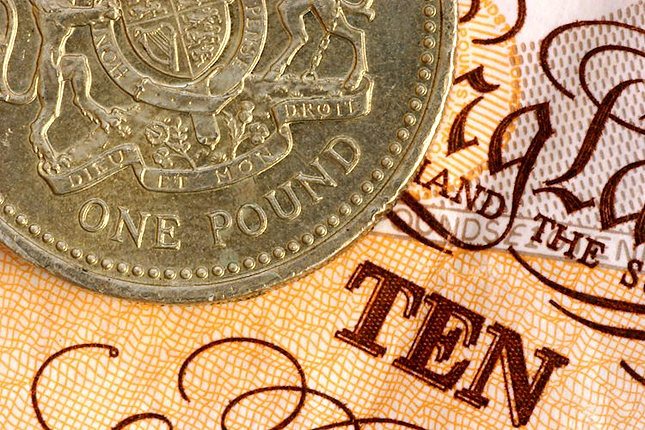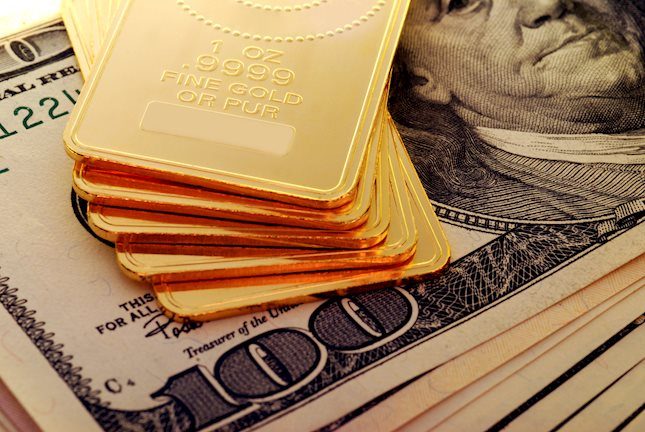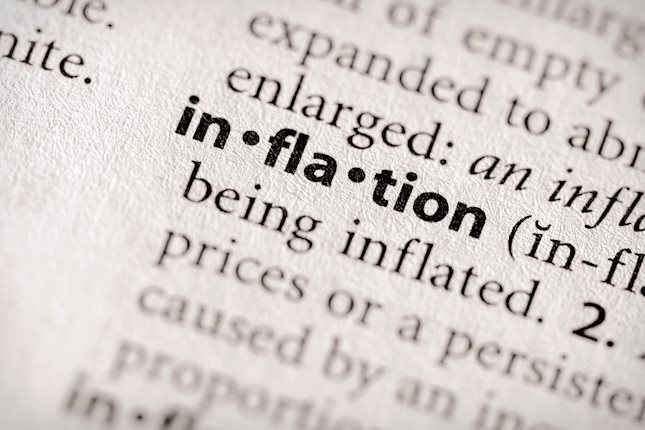Christine Lagarde, President of the European Central Bank (ECB), explains the decision to raise key interest rates by 25 basis points in September and responds to questions from the press.
ECB press conference key quotes
“Inflation still seen as too high for too long.”
“Rates will remains at sufficiently restrictive levels for as long as necessary.”
“Economy likely to remain subdued in coming months”.
“Services are weakening”.
“Economic momentum should pick up as real income rise”.
“The labor market is resilient”.
“Governments should roll back support measures.”
“Tightening continues to be transmitted strongly”.
“Credit dynamics have waekened, rates have risen”.
“A solid majority of ECB members agreed with the decision”.
“Some governors would have preferred to pause”.
“We did not discussed PEPP programme and reinvesmtnets”.
“We did not discussed APP outright sales”.
“We did not discuss how long we will leave rates at these levels”.
“I’m not saying we are at peak rates”.
“Policy transmission to financing conditions is faster than in previous cycles.”
Market reaction
As the ECB hinted that it was the last rate hike, the Euro weakened across the board. After the "dovish hike," the market sees practically no chance of another rate hike over the next meetings and considers that the ECB could start cutting interest rates in March.
The EUR/USD tumbled from 1.0730 to 1.0650, reaching its lowest level since late May while EUR/GBP dropped from 0.8600 to 0.8575.
About Christine Lagarde
Christine Lagarde was born in 1956 in Paris, France. Graduated from Paris West University Nanterre La Défense and became President of the European Central Bank in November 1st 2019. Prior to that, she served as Chairman and Managing Director of the International Monetary Fund between 2011 and 2019. Lagarde previously held various senior ministerial posts in the Government of France: she was Minister of the Economy, Finance and Industry (2007–2011), Minister of Agriculture and Fishing (2007) and Minister of Commerce (2005–2007).
About ECB's press conference
Following the ECB´s economic policy decision, the ECB President gives a press conference regarding monetary policy. Her comments may influence the volatility of EUR and determine a short-term positive or negative trend. Her hawkish view is considered as positive, or bullish for the EUR, whereas her dovish view is considered as negative, or bearish.
This section below was published at 12:15 GMT to cover the European Central Bank's policy announcements and the initial market reaction.
The European Central Bank announced that it raised key rates by 25 basis points (bps) following the September policy meeting. The interest rate on the main refinancing operations and the interest rates on the marginal lending facility and the deposit facility will be increased to 4.50%, 4.75% and 4.00% respectively, with effect from 20 September 2023.
The interest-rate hike came against market expectations of a pause. Still, the accompanying statement from the ECB signaled that policymakers are unlikely to raise rates further, hinting at the end of the current tightening cycle.
"The Governing Council considers that the key ECB interest rates have reached levels that, maintained for a sufficiently long duration, will make a substantial contribution to the timely return of inflation to the target", the ECB stated.
The ECB staff upwardly revised inflation forecasts for 2023 and 2024, but cut inflation expectations for 2025. Forecasts for core inflation, a key measure that excludes the more volatile categories of food and energy, has also been slightly revised downwards. The ECB also expects the eurozone economy to perform worse than previously expected.
ECB President Christine Lagarde will hold a press conference starting at 12:45 GMT.
Key takeaways from the policy statement:
Inflation continues to decline but is still expected to remain too high for too long. The Governing Council is determined to ensure that inflation returns to its 2% medium-term target in a timely manner. In order to reinforce progress towards its target, the Governing Council today decided to raise the three key ECB interest rates by 25 basis points.
The September ECB staff macroeconomic projections for the euro area see average inflation at 5.6% in 2023, 3.2% in 2024 and 2.1% in 2025. This is an upward revision for 2023 and 2024 and a downward revision for 2025.
ECB staff have slightly revised down the projected path for inflation excluding energy and food, to an average of 5.1% in 2023, 2.9% in 2024 and 2.2% in 2025.
The Governing Council considers that the key ECB interest rates have reached levels that, maintained for a sufficiently long duration, will make a substantial contribution to the timely return of inflation to the target.
The Governing Council’s future decisions will ensure that the key ECB interest rates will be set at sufficiently restrictive levels for as long as necessary.
In particular, the Governing Council’s interest rate decisions will be based on its assessment of the inflation outlook in light of the incoming economic and financial data, the dynamics of underlying inflation, and the strength of monetary policy transmission.
Market reaction
The Euro tumbled after the decision, with EUR/USD falling from 1.0740 to below 1.0700. The mention that interest rates have reached "levels that, maintained for a sufficiently long duration, will make a substantial contribution to timely return" suggests a potential end to the tightening cycle, weakening the common currency.
Follow our live coverage of the market reaction to ECB policy decisions
This section below was published at 07:00 GMT as a preview of the European Central Bank (ECB) policy announcements.
- The European Central Bank is likely to leave key interest rates on hold on Thursday.
- Lagarde could leave the door ajar for one more rate hike by year-end.
- The Euro braces for volatility on the ECB decision and Lagarde’s presser.
The European Central Bank (ECB) is widely expected to leave interest rates unchanged for the first time since early 2022, following the conclusion of its monetary policy meeting on Thursday. The Bank will publish its quarterly updated staff projections alongside, while ECB President Christine Lagarde’s press conference will follow at 12:45 GMT.
Follow FXStreet.com's live coverage
European Central Bank interest rate decision: What to know in markets on Thursday
- EUR/USD is fading its recovery from near 1.0750 as the US Dollar (USD) stabilizes following the mixed US Consumer Price Index (CPI) data.
- The annual United States inflation gauge rose 3.7% in August, compared with a 3.6% rise expected. The CPI rose 0.6% in August, its biggest monthly gain of 2023 and matched the market estimates. The core CPI increased 0.3% and 4.3% respectively, against estimates for 0.2% and 4.3%.
- US S&P 500 futures gain on the market optimism, as the US data cemented Federal Reserve (Fed) pause bets.
- The benchmark 10-year US Treasury bond yield drops toward 3.21%.
- On Tuesday, the German ZEW Economic Sentiment improved to -11.4 in September. However, the index gauging current conditions hit a three-year low at -79.4. “Financial market experts are even more pessimistic about the current economic situation in Germany than they were in August 2023,” the ZEW Institute said.
- The ECB event will be decisive for the near-term direction of the EUR/USD pair, as the focus shifts toward next week’s Fed policy announcements.
ECB interest rates expectations and implications for EUR/USD
The European Central Bank (ECB) is at a crossroads. The bank is set to face the hardest decision since it began raising interest rates in July 2022 as it battles heightened risks of stagflation. Eurozone’s annual inflation stood at 5.3% in August, down sharply from the 10.6% recorded in October 2022. Core inflation, however, remains sticky above 5.0% when compared to the ECB’s 2.0% target.
The Gross Domestic Product (GDP) in the old continent expanded by a marginal 0.1% in the quarter to June when compared to the previous quarter. Further, the European Commission downgraded its economic growth projections for this year and the next one, citing that the German economy has slipped into a recession.
Against this backdrop, the central bank is likely to announce on Thursday at 12:15 GMT that it will keep interest rates steady, with the Deposit Rate at 3.75% and the main Refinancing operations lending rate at 4.25%.
Comments before this key meeting suggest that ECB policymakers are split on the upcoming policy decision. Governor of the National Bank of Slovakia Peter Kazimir said last week that his preferable option would be to raise the policy rate by 25 basis points (bps) at the policy meeting next week. President of the Dutch central bank Klaas Knot told Bloomberg that investors betting against an interest rate increase next week are possibly underestimating the likelihood of it happening.
Meanwhile, on the dovish side, Governor of the Bank of France Francois Villeroy de Galhau said, “our options are open at the next and the upcoming rate meetings,” adding that “we are near or very near the peak regarding interest rates.” Portugal’s central bank chief Mário Centeno said the risk of “doing too much” has become “material” as the outlook for the eurozone economy has deteriorated in recent weeks. Italian central bank Governor Ignazio Visco noted: “I believe we are near the level where we can stop raising rates.”
However, the market’s pricing for the ECB’s interest rate decision this week has changed dramatically after a Reuters report said on Tuesday that the ECB expects inflation in the 20-nation Eurozone to remain above 3.0% next year, bolstering the case for a tenth consecutive interest rate increase on Thursday.
Ahead of the report, there was only a 35% chance of the ECB raising its key rates by 25 bps on September 14, which is now seen as significantly higher at 63%, according to data from Reuters. The revival of the hawkish ECB expectations gave strength to the Euro, with the EUR/USD pair jumping back toward 1.0800.
If the ECB holds rates with a hawkish language, pointing to one more rate hike by year-end, EUR/USD is likely to resume its upswing toward 1.0850. A bullish reversal from multi-month lows will be confirmed should the ECB announce a 25 bps rate hike, although the policy guidance and President Christine Lagarde’s words will hold the key for the additional upside in EUR/USD. On the contrary, an ECB rate hike pause combined with a lack of clarity on the central bank’s path forward will cheer doves, pushing EUR/USD back toward 1.0650.
Dhwani Mehta, Asian Session Lead Analyst at FXStreet, offers a brief technical outlook for the major and explains: “EUR/USD is trading on the front foot ahead of the key ECB event. The 14-day Relative Strength Index (RSI), however, is holding below the 50 level, suggesting that upside attempts could be limited for Euro buyers.”
Outlining important technical levels to trade the EUR/USD pair, Dhwani notes: “On the upside, buyers need to take out a strong resistance at 1.0800, the confluence of the round level and the bearish 21-day Simple Moving Average (SMA), to extend the recovery toward the 200-day Simple Moving Average (SMA) at 1.0828. The next upside barrier is seen at the psychological level of 1.0850.”
“Alternatively, critical support is located at the three-month low of 1.0686. A sustained break below that level will challenge the May low of 1.0635, below which a fresh downswing toward 1.0600 cannot be ruled out.”
ECB FAQs
What is the ECB and how does it influence the Euro?
The European Central Bank (ECB) in Frankfurt, Germany, is the reserve bank for the Eurozone. The ECB sets interest rates and manages monetary policy for the region.
The ECB primary mandate is to maintain price stability, which means keeping inflation at around 2%. Its primary tool for achieving this is by raising or lowering interest rates. Relatively high interest rates will usually result in a stronger Euro and vice versa.
The ECB Governing Council makes monetary policy decisions at meetings held eight times a year. Decisions are made by heads of the Eurozone national banks and six permanent members, including the President of the ECB, Christine Lagarde.
What is Quantitative Easing (QE) and how does it affect the Euro?
In extreme situations, the European Central Bank can enact a policy tool called Quantitative Easing. QE is the process by which the ECB prints Euros and uses them to buy assets – usually government or corporate bonds – from banks and other financial institutions. QE usually results in a weaker Euro.
QE is a last resort when simply lowering interest rates is unlikely to achieve the objective of price stability. The ECB used it during the Great Financial Crisis in 2009-11, in 2015 when inflation remained stubbornly low, as well as during the covid pandemic.
What is Quantitative tightening (QT) and how does it affect the Euro?
Quantitative tightening (QT) is the reverse of QE. It is undertaken after QE when an economic recovery is underway and inflation starts rising. Whilst in QE the European Central Bank (ECB) purchases government and corporate bonds from financial institutions to provide them with liquidity, in QT the ECB stops buying more bonds, and stops reinvesting the principal maturing on the bonds it already holds. It is usually positive (or bullish) for the Euro.
Economic Indicator
European Monetary Union ECB Monetary Policy Decision Statement
At each governing council meeting, the European Central Bank releases a short statement explaining its monetary policy decision, with the goal of meeting its inflationary target. The document carries huge importance for the EUR, as any tweaks to the wording can move the common currency either up (hawkish statement) or down (dovish statement).
Read more.
Information on these pages contains forward-looking statements that involve risks and uncertainties. Markets and instruments profiled on this page are for informational purposes only and should not in any way come across as a recommendation to buy or sell in these assets. You should do your own thorough research before making any investment decisions. FXStreet does not in any way guarantee that this information is free from mistakes, errors, or material misstatements. It also does not guarantee that this information is of a timely nature. Investing in Open Markets involves a great deal of risk, including the loss of all or a portion of your investment, as well as emotional distress. All risks, losses and costs associated with investing, including total loss of principal, are your responsibility. The views and opinions expressed in this article are those of the authors and do not necessarily reflect the official policy or position of FXStreet nor its advertisers. The author will not be held responsible for information that is found at the end of links posted on this page.
If not otherwise explicitly mentioned in the body of the article, at the time of writing, the author has no position in any stock mentioned in this article and no business relationship with any company mentioned. The author has not received compensation for writing this article, other than from FXStreet.
FXStreet and the author do not provide personalized recommendations. The author makes no representations as to the accuracy, completeness, or suitability of this information. FXStreet and the author will not be liable for any errors, omissions or any losses, injuries or damages arising from this information and its display or use. Errors and omissions excepted.
The author and FXStreet are not registered investment advisors and nothing in this article is intended to be investment advice.
Recommended content
Editors’ Picks

EUR/USD clings to gains above 1.0500 as US Dollar wilts ahead of data
EUR/USD holds its ground and trades in positive territory above 1.0500 on Wednesday. Traders cash in on the US Dollar long positions ahead of a series of top-tier US data, lifting the pair. The USD/JPY sell-off also adds to the US Dollar downside.

GBP/USD holds gains near 1.2600, US PCE data eyed
GBP/USD extends the bullish momentum to trade near 1.2600 in the second half of the day on Wednesday. The pair benefits from a sustained US Dollar weakness but the risk-off sentiment limits the upside as traders turn cautious ahead of top-tier US data releases.

Gold rises toward $2,650 as traders “buy the fact” following news of Lebanon ceasefire
Gold (XAU/USD) recovers into the $2,650s on Wednesday as traders “buy the fact” of the ceasefire deal brokered between Israel and Hezbollah after “the rumor” led to heavy selling on Monday. Market focus shifts to US data releases.

US core PCE inflation set to hold steady, raising doubts on further Federal Reserve rate cut
The United States Bureau of Economic Analysis (BEA) is set to release the Personal Consumption Expenditures (PCE) Price Index data for October on Wednesday at 15:00 GMT.

Eurozone PMI sounds the alarm about growth once more
The composite PMI dropped from 50 to 48.1, once more stressing growth concerns for the eurozone. Hard data has actually come in better than expected recently – so ahead of the December meeting, the ECB has to figure out whether this is the PMI crying wolf or whether it should take this signal seriously. We think it’s the latter.

Best Forex Brokers with Low Spreads
VERIFIED Low spreads are crucial for reducing trading costs. Explore top Forex brokers offering competitive spreads and high leverage. Compare options for EUR/USD, GBP/USD, USD/JPY, and Gold.